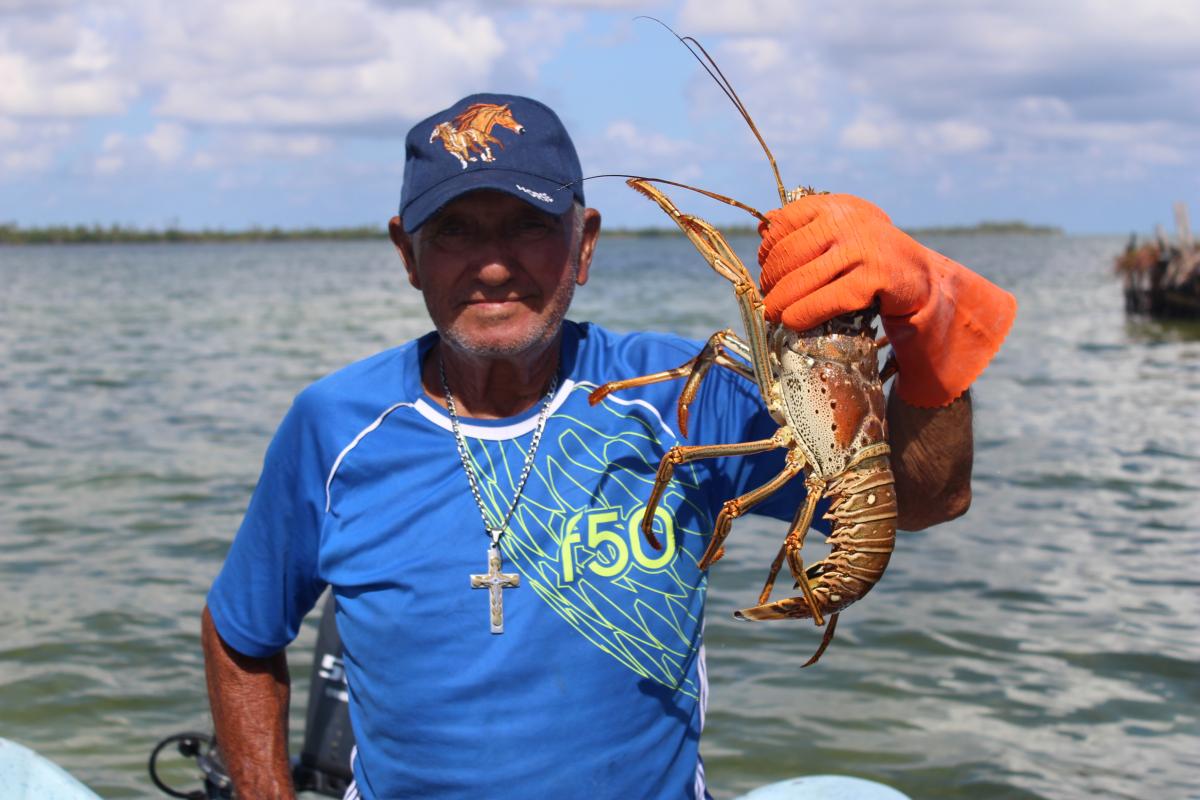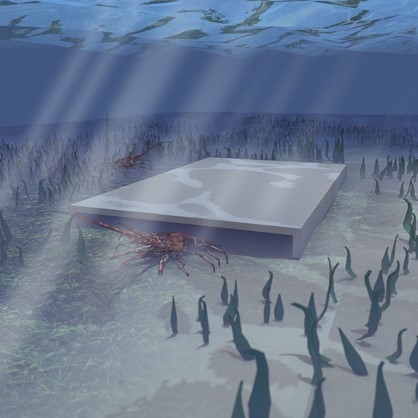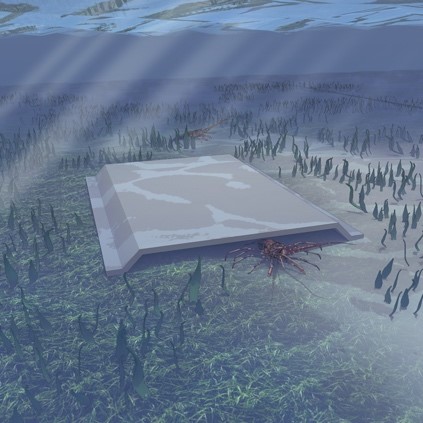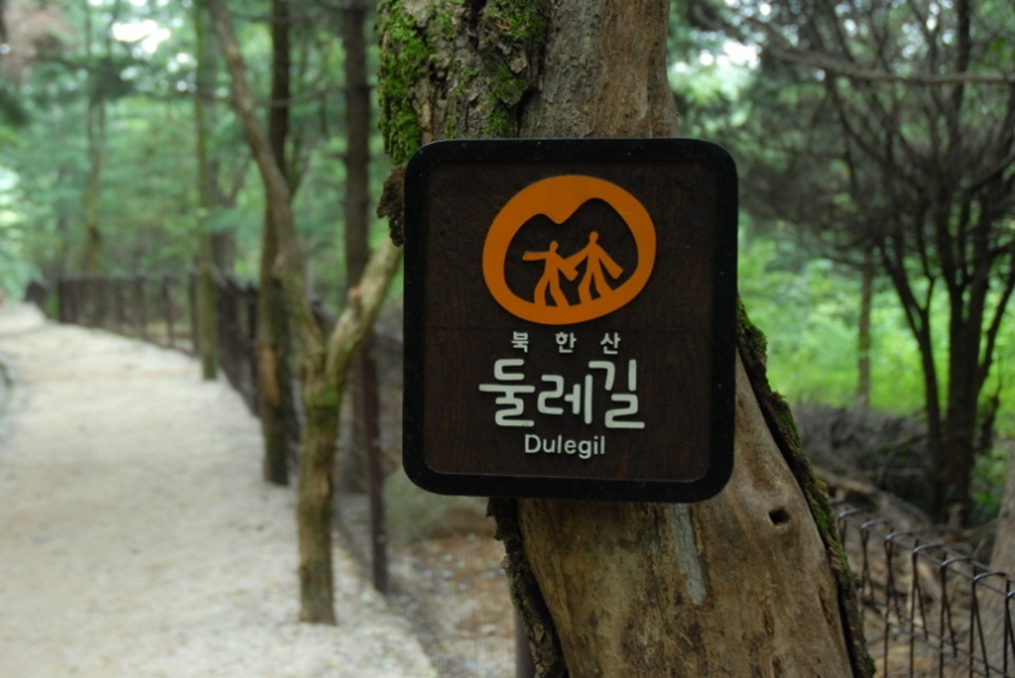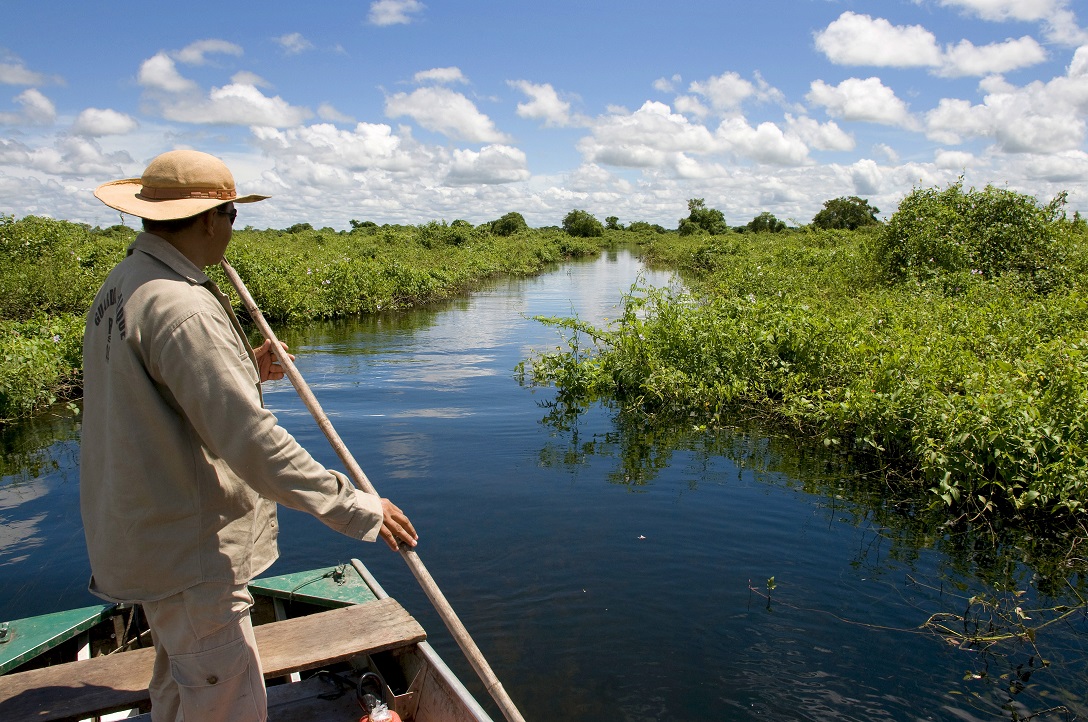Chakay - the Mexican MPA experience of sustainable ecolabeling and traceability
Achieving Sustainability Principles and applying the Criteria for Management and Eco-labelling in fishing and touristic activities in the in the Mexican Caribbean, specifically in the Sian Ka’an and Banco Chinchorro Biosphere Reserves has been a complex yet very interesting process.
This offers an example of balancing both sustainable management and the economic development of the local communities, covering more then 300 families, who now directly benefit from the prestigious reputation obtained from this process.
These two Marine Protected Areas (MPAs) are to be found in the south eastern coast of Mexico, in the most northern part of the Mesoamerican Barrier Reef (MAR) the 2nd largest ecosystem of its kind in the world, that links with southern countries of Belize, Guatemala, Honduras, as well as most of Central & South American Caribbean as shown by genetic and larval connectivity studies. The object of this ongoing project has been to preserve these Marine Protected Areas (MPAS) and their ecosystems through the sustainable management of the Caribbean Spiny Lobster, (Panulirus argus) as a key species of high economic value. Lobster is the most commercially important fishery, and its 6 stage life cycle links larval and adult metapopulations in the Caribbean Seas ranging from South America in Nicaragua/Colombia up to the U.S.A. which has a crucial bio-geographic connotation of regional importance.
The participative building process of this initiative goes back to 2004 when RAZONATURA (NGO) CONABIO and CONANP (Government) promoted and carried out the first workshops with the six fishing cooperatives of the Sian Ka’an and Banco Chinchorro Biosphere Reserves: “Cooperativa(s) Cozumel, Jose Maria Azcorra, Vigia Chico, Pescadores de Banco Chinchorro, Langosteros del Caribe and Andres Quintana Roo” who own exclusive rights and access to these fisheries. In a Multidisciplinary, inter-agency, and stakeholder inclusive scenario, this ongoing process, has included the need to satisfy biological and ecological criteria, but has also given great importance to the economic and social aspects of these artisanal Caribbean Spiny lobster fisheries (Panulirus argus) within the two Biosphere Reserves in Mexico.
The increase in the product´s value by more than 30% as a result of implementing live lobster capture methods, has also helped save reproductive adults and undersized juveniles from being caught which results in a substantial contribution to the Caribbean’s larger metapopulation linked by larvae and currents further north. But, most importantly this price increase has helped sustain the economies of the local fisher families whilst also enlarging biomass and juvenile recruitment which has been key for sustaining the local lobster populations
About the Marine Protected Areas:
Banco Chinchorro (BC) forms a complex system of coral patches and ridges encompassing a reef lagoon. I The distance from the coast and its status as a protected area have minimized the impact of coastal development on the ecosystems. It has irregular elliptical shape, and the reef lagoon of about 547 km, is shallower (~2-5 m) in the northern half, becoming deeper (~ 5-13 m) in the south, and is completely surrounded by a reef rim 115 km long. It has up to 14% hard coral coverage at some sites significantly higher than the average of 8% estimated for the Caribbean Sea. In these areas, 159 species from 4 taxonomic groups (hexacorals, octocorals, sponges and algae) have been recorded and the dominant species on the reef consist of Montastraea annularis, Agaricia agaricites, Siderastrea siderea, Dictyota dichotoma, and Halimeda opuntia.
The Sian Ka’an Biosphere Reserve (SK) is situated to the South-east of the State of Quintana Roo in the Yucatan Peninsula, facing the Mexican Caribbean coast north from BC, 50 km to the north of Chetumal city and 130 km to the south of Cancún city (See MAP). The SK Biosphere Reserve has a total surface area of 528,000ha: 408,000 ha is terrestrial and 120,000 ha marine where the two bays of Bahía de la Ascensión (BA) and Bahía del Espíritu Santo (BES) are located. These Bays contain two of Quintana Roo’s State most important lobster fishing grounds, with fisher camping grounds at Punta Allen, Marielena, and Punta Herrero the Sian Ka’an Biosphere Reserve has delimited three marine coastal preservation areas called “Zonas Núcleo Marinas”. These include the Federal Marine Terrestrial Zones (sand and dunes bordering water limits), reef lagoons, reef crests, and the frontal reef reaching the deepest limits established by the eastern border of the Reserve.
Traceability for commercial purposes and Biological Data gathering:
QR Codes are used to trace the lobster from the plate to the boat: when, where, and by whom was the lobster caught? All information can be seen by the final consumer on the plate! Biological data derived from QR code helps assess the biometrics and the populations stock health sustainability.
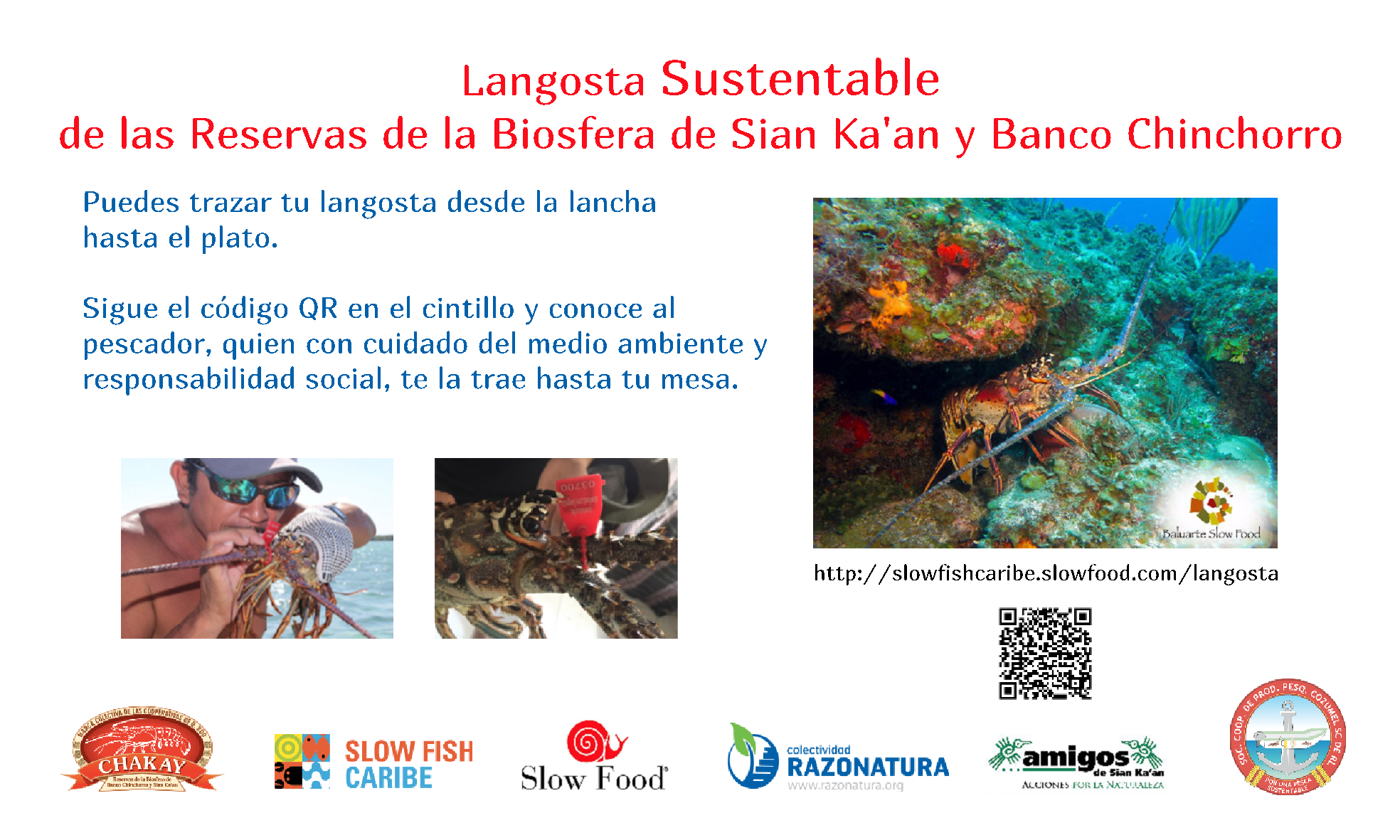 Photo: © Kim Ley Cooper, RAZONATURA
Photo: © Kim Ley Cooper, RAZONATURA
The local eco-labelling scheme - Chakay, representing all cooperatives that fish in these two areas, has been implemented with different phases in an inclusive and participatory process amongst all stakeholders. The eco-labelling scheme is an innovative way used to increase compliance with management arrangements, which may in turn lead to more sustainable fisheries. The eco-label implementation scheme is viewed as a commercial and legal strategy intended for generating an added value to sustainable practices, and it can be used as an instrument to help scientific monitoring and stock assessment of the lobster population by using traceability as a commercial strategy (see the slow fish tag initiative) which also gathers crucial biological data for stock assessment.
The P. argus-spiny lobster fisheries are the most highly valued single species captured in the Mexican Caribbean, and the Banco Chinchorro & Sian Ka‘an cooperatives represent more than 50% of the State of Quintana Roo‘s total catch of lobsters. Whilst recognizing that sustainability has environmental, ecologic, economic and social dimensions, addressing it in relation to these fisheries requires an extended analysis of the dynamics of the lobster population, which is an ongoing process. Ecological aspects, survey techniques, and stock assessment are overviewed and strengthened with this process. The relationship between the socio-economic status of the cooperatives, whose livelihood depends mainly on these fisheries, and the possible impact on the lobster population is crucial.
Recognizing artisanal practices and self-governance with regulations promoted by these communities This scheme has become an international example of how to exercise local property rights over the sea floor by assigning “Campos Pesqueros” (fishing lots) using casitas as a lobster refuge for a free range lobsters to go in and out whilst protecting from predators. Casitas allow for recruitment of juveniles and a selective fishery.
The Chakay Lobster ecolabel is the first of its type as it has a commercial Marine Geographical recognition that includes an “indication of origin” similar to what occurs with Tequila, Mezcal, or Champagne by tracing the lobster species (Panulirus argus) back to the Biosphere Reserves where they were caught. The latter also link the lobster to the high the quality offered by the freshness of the live lobsters which are caught by free diving techniques, besides acknowledging community based co-management of the fisheries in Banco Chinchorro and Sian Ka‘an. The local National process then led to the international MSC certification for sustainability in 2012, and most recently become a Slow Food presidia (Baluarte) in 2017. The ecolabelling and its progressive phases certifying the fishery have been conducted with the aim of proposing alternatives for improvement in the integral management of these Protected Areas.
For more information. See following links: For Scientific data, Publications and sustainability concepts see: https://www.researchgate.net/profile/Kim_Ley-Cooper
